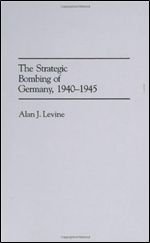Chinese urbanism developed out of Neolithic and Chalcolithic patterns of site layout (Figure 4). Over several millennia, village sites began to exhibit specialized architecture, distinguishable residential clusters, and the construction of defensive ditches. By Longshan times (c. 2600-2000 BC), square or rectangular precincts with nucleated populations were enclosed by walls of rammed earth (hangtu), which are thought to have housed and protected an emerging elite. Walled sites from the Longshan period include Wangchenggang, Dantu, Bianxianwang, Pingliangtai, Shijiahe-Tucheng, and Laohushan. The walls of these sites enclose a modest area (generally less than 10 ha), and although residential areas are known outside of the walls, it is probably inaccurate to consider such sites to be the urban capitals of early states. (In comparison, the average city size for Eastern Zhou capitals (770-221 BC) has been estimated to be about 16 km2.) Recent archaeological surveys indicate the establishment of multitier settlement hierarchies during Longshan times, with some very large sites developing. Despite large settlement sizes, clear archaeological indications of centralized states do not appear to be present during the third millennium BC.
Longshan period developments culminated in the emergence of a suite of new artifactual and architectural forms known as the Erlitou culture (that many researchers using texts link to the Xia Dynasty). Erlitou is a sizeable settlement that has foundations of what is interpreted as a palace, as well as several craft workshops. Although no wall has been found at this site, rammed-earth foundations have been identified, the largest of which were surrounded by an enclosure wall and held large halls in which rituals were conducted. In its later phases, the Erlitou site is thought to have developed into the urban capital of a centralized state.
Zhengzhou
Clear archaeological and textual evidence for urban settlements with populations numbering at least in the thousands is more readily available from the midsecond millennium BC. Shang period sites of the Central Plain (Zhongyuan region) in North China. The Middle Shang (c. 1600 BC) city of Zhengzhou consists of a walled area surrounded by areas of craft production, and is thought to have been the capital of a Shang state. The walled sector of the city enclosed an area of nearly 3 km2, within which are a number of rammed-earth platforms that may have held elite residences. While the walled part of the city is considered to have housed an elite population, craft production areas have been identified outside the walls, including bronze smelting, bone ornament and tool production, and pottery production. Cemeteries are also found outside the walled city.
A number of smaller cities appear to have developed around the same time as Zhengzhou, including Panlongcheng and Shixianggou. The latter site has a walled precinct laid out with wide avenues and has a large palace enclosure that occupies about 4 ha.
Anyang
The later Shang capitals at Anyang and Shangqiu are better known archaeologically. Anyang is thought to have been the sixth and final capital of the Shang dynasty. By around 1200 BC, the city comprised a metropolitan area of some 15 km2, consisting of multiple occupation clusters spread along a 6 km stretch of the Yellow River. Anyang was not merely a conglomeration of villages - large-scale residential foundations thought to be palaces have been found at Xiaotun, and tombs of a scale indicative of royal burial are present at Xibeigang, where a large number of inscribed oracle bones attest to a qualitative change in social organization. Three clusters of hangtu foundations have been identified at Xiaotun, a total of 53 individual foundations of which the largest is 2800 m2. Storage pits containing the remains of grain, bronze weapons, oracle bones, and fine pottery have been identified around the palatial foundations. Craft workshops and commoner residences are also present, indicating that bronze casting and jade, shell, bone, and stone working were conducted in the area around the palaces. The Xiaotun sector is thought to be the administrative-ceremonial core of Anyang, administering a web of surrounding settlement clusters.
One of the outlying sites that constitute the Anyang urban web is Xibeigang, where 13 monumental tombs have been excavated. All of these consist of a primary pit accessed by ramps that share the same orientation and have evidence of extensive sacrificial burials (including humans, dogs, horses, and other animals) associated with the burials of prominent individuals. Although these have been extensively looted, the Fu Hao tomb excavated at Xiaotun offers us a sense of the wealth of grave goods placed with prominent individuals. This tomb belonged to a wife of the ruler Wu Ting and contained 16 human sacrificial victims, six dogs, 7000 cowrie shells, and more than 1600 other items (bronzes, jades, oracle bones, stone objects, ivory carvings, pottery, and shell objects).
More research is needed to clarify patterns of urban development in China, but it is clear that cities with populations exceeding 100 000 had developed by Eastern Zhou times (771-221 BC), when urban settlements exhibit a more nucleated character and a more consistent layout. By this time, the urban form included a walled inner city (wangcheng) that contained a palace, an outer city (guo), and a surrounding hinterland of suburbs (jiao) and farming hamlets (yie). Zhou cities were commercial centers with thriving craft industries and well-developed administrative hierarchies.
It is undeniable that these cities developed out of millennia-long traditions of settlement organization. Longshan social development saw the appearance of walled compounds of a few hectares, possibly areas of elite residence and craft production that were surrounded by commoner settlement. By the mid-second millennium BC, China’s largest sites covered several square kilometers and had sizeable precincts (sometimes walled) in which monumental architecture, palatial residences, ritual spaces, and storage facilities were located. Craft production appears to have become more specialized and was carried out on a larger scale in workshops outside of the inner city. Farmers lived in rural communities outside of the cities. It appears that the inner parts of these early cities were planned to a degree not seen at the urban periphery, which grew more organically in a number of linked settlement clusters.




 World History
World History









